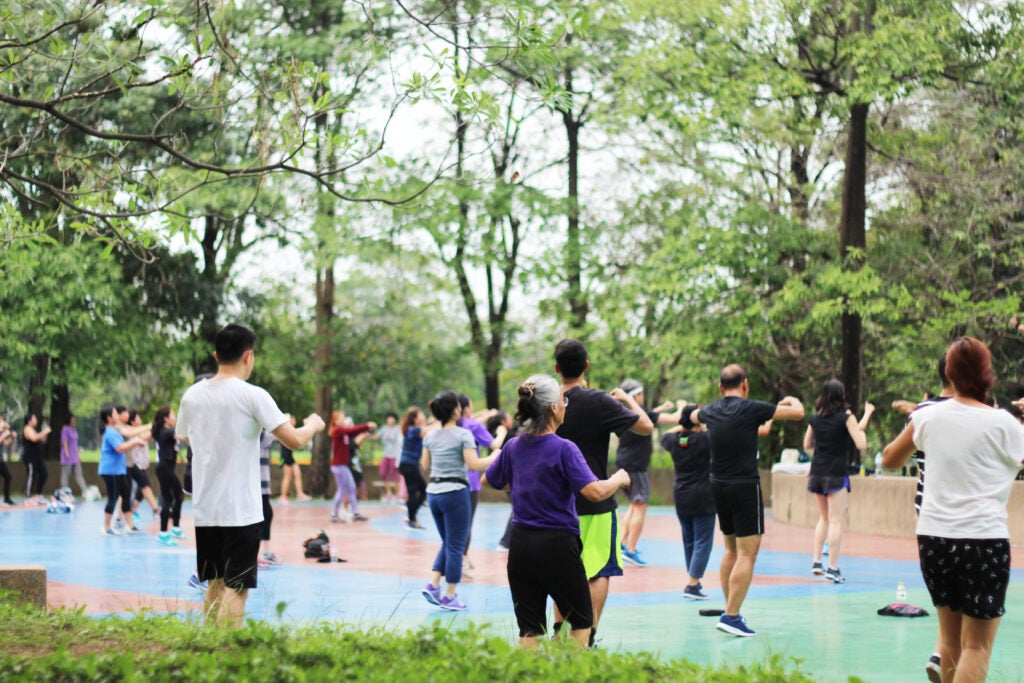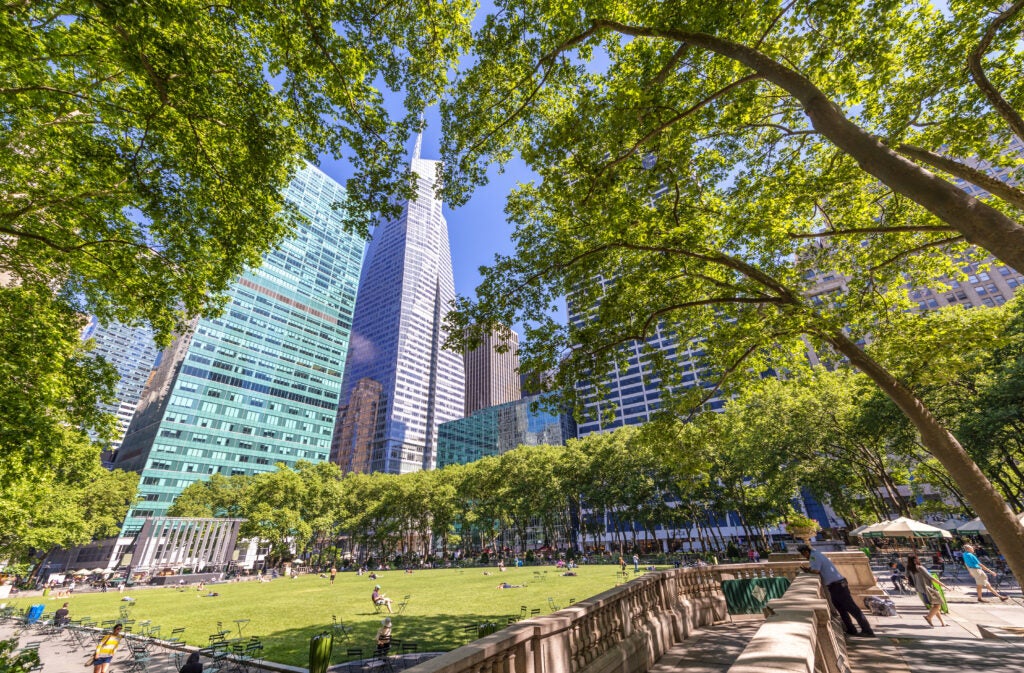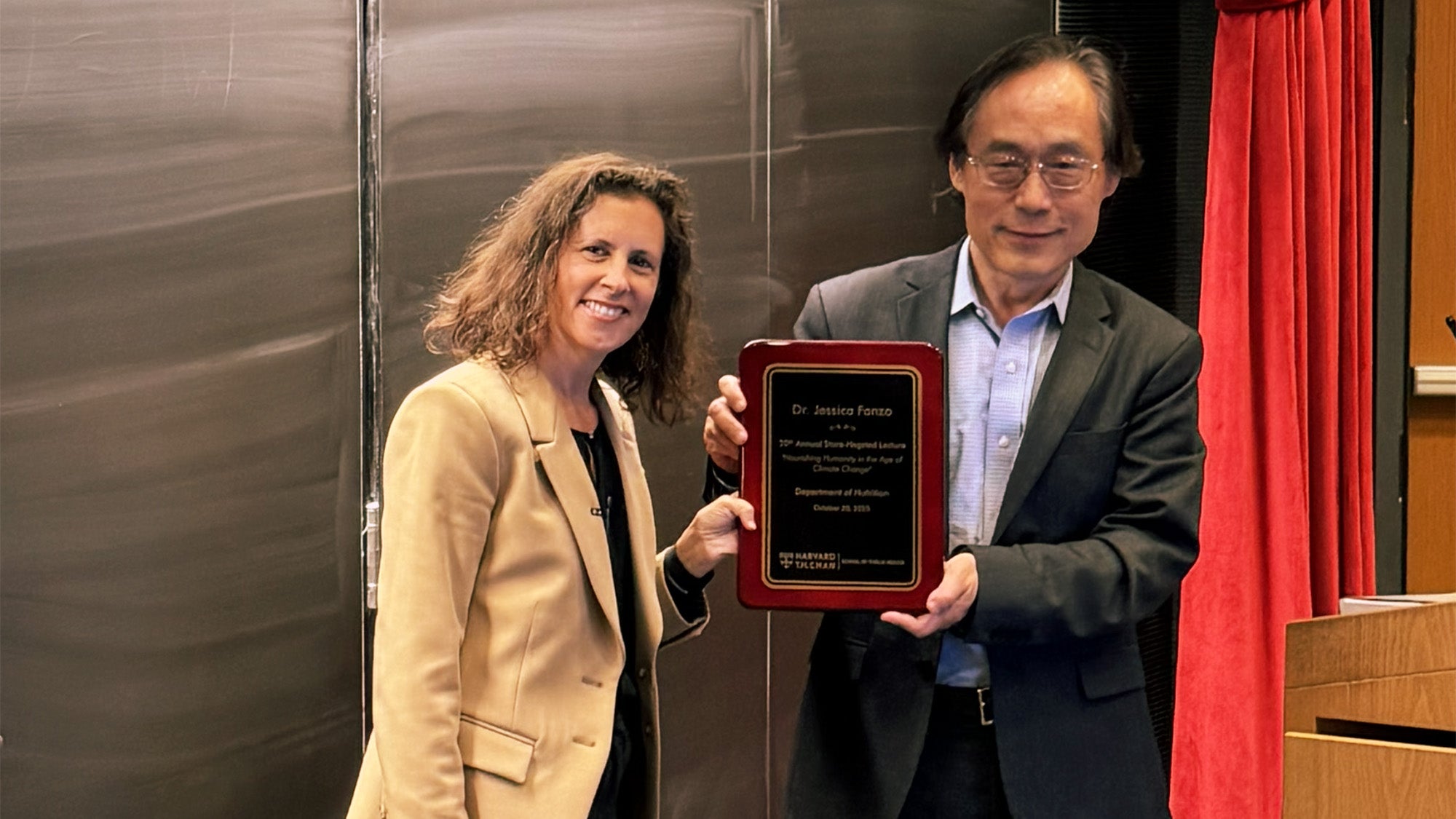A new study clarifies the importance of nature for mental health in urban settings and provides low-cost recommendations for improving public health in cities.
As the proportion of the global population living in cities rises to 70% by 2050, mental health challenges more common in urbanites — such as anxiety and mood disorders — become even more broadly relevant. A new study from Harvard T.H. Chan School of Public Health and the Natural Capital Project (NatCap) at Stanford University shows that spending even a little time in nature provides significant benefits for a broad range of mental health conditions. The results, published today in Nature Cities, offer guidance to urban planners, policymakers, and others for how to use greenspace as a mental health solution, one that comes with additional benefits like lowering temperatures and sequestering carbon. The research team is now incorporating its findings into a modeling tool for urban planners.

“We are working to translate what we found through this analysis to create more intuitive indicators that would be useful for decision-makers,” said Yingjie Li, postdoctoral scholar at NatCap and lead author of the study. “For example, if a city currently has 20% green space or tree cover, we can try to predict how many preventable cases of mental health disorders could be avoided if that were increased to 30%. Our software will also estimate the potential reduction in healthcare costs associated with such improvements in urban nature.”
NatCap’s flagship mapping and modeling tools, known as InVEST, are used around the world to quantify ecosystem services, or nature’s benefits to people. For years the team has been building a collection of tools focused specifically on nature in cities.
“I was excited to be part of this work with the Stanford team. This study fills a critical gap in our ability to examine different types of nature to improve mental health outcomes. InVEST is an innovative and impactful solutions-based tool that will shape how we plan for people to enjoy healthier lives in a healthier planet” said Kari Nadeau, John Rock Professor of Climate and Population Studies, and Chair of the Department of Environmental Health at Harvard T.H. Chan School of Public Health.
The team’s analysis collates data from close to 5,900 participants across 78 field-based experimental studies, all either randomized controlled trials or pre-post intervention studies. While all types of urban nature provided benefits, the researchers found urban forests were even better for certain measures like reducing depression and anxiety. Young adults experience even greater benefits than the general population — an important data point because most mental health disorders emerge before the age of 25. Perhaps surprisingly, spending non-active, stationary time in greenspaces was more effective at reducing negative mental health outcomes like depression than active time in nature, though both are equally beneficial for positive outcomes like vitality (measured by asking how alive, alert, and energized people feel). They also found effects to be greater in Asian countries, where physiological effects may be enhanced by cultural associations with nature that “prime” people to their benefits.

Based on the findings of this analysis, while larger city parks and forests are critical, the researchers suggest it is also important to create smaller “pocket parks” and additional street trees to increase access throughout cities. Even additional windows with views facing green spaces could be beneficial, as well as quiet, nature-filled spaces and community programming that provides passive nature exposure such as guided park meditation — relatively low-cost methods for improving public health in cities.
At the personal level, Li has found that doing this work has improved his own lifestyle. He walks to the office more frequently and finds he is more curious about birds and plants he encounters along the way. “I also talk to my friends about thinking this way and encourage them to notice how even small moments with nature can make a difference. This work has helped me see that urban nature isn’t just good for cities, it’s good for us.” said Li.
Li is a postdoctoral scholar in the Department of Biology in Stanford’s School of Humanities and Sciences (H&S). Nadeau is Chair of the Department of Environmental Health and Professor at the Harvard T.H. Chan School of Public Health and Harvard Medical School. Additional co-authors on the paper are: Lisa Mandle (NatCap/Woods Institute), Anders Rydström (NatCap/Biology, H&S), Tong Wu (NatCap/Woods Institute), Yougeng Lu (NatCap/Biology, H&S), and Gretchen Daily (NatCap/Biology, H&S and Woods Institute; Yuanyuan Mao and Roy P. Remme from the Institute of Environmental Sciences at Leiden University; Xin Lan from the Department of Geography, Environment, and Spatial Sciences at Michigan State University; Chao Song from the College of Ecology at Lanzhou University;; and Andreas Meyer-Lindenberg from the Department of Psychiatry and Psychotherapy, Central Institute of Mental Health and Medical Faculty Mannheim/University of Heidelberg.
This research is supported by grants from the Stanford Woods Institute for the Environment’s Realizing Environmental Innovation Program, the Cyrus Tang Foundation, the Marcus and Marianne Wallenberg Foundation, the Heinz Foundation, the Winslow Foundation, and individual contributors John Miller and Kristy Hsiao.
Media contacts:
Elana Kimbrell, elanak@stanford.edu
Carly Stearnbourne, cstearnbourne@hsph.harvard.edu



